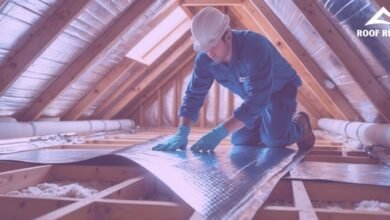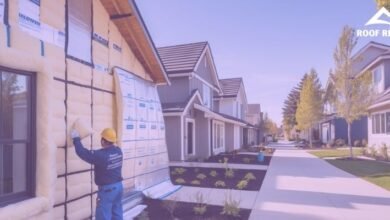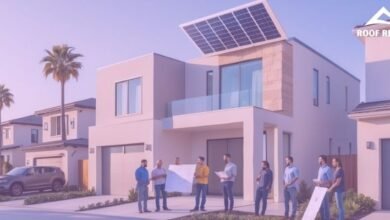Santa Clarita Insulation Tips for Dry Climates

Santa Clarita’s dry climate means homes face unique challenges when it comes to insulation. The low humidity and hot summers cause heat to pass through walls and roofs more easily, making it harder to keep indoor temperatures stable. Proper insulation is essential to prevent heat loss in winter and reduce heat gain in summer, improving comfort and energy efficiency.
Because the air is dry, standard insulation methods may need adjustments to work well. Moisture levels inside the home stay low, which can affect how insulation materials perform over time. Homeowners must consider these factors to maintain a balanced indoor environment and protect their heating and cooling systems.
Understanding how Santa Clarita’s climate impacts insulation helps residents make smarter decisions for their homes. Effective insulation not only saves energy but also helps maintain a comfortable home year-round despite the dry conditions outside.
Understanding Santa Clarita’s Dry Climate

Santa Clarita experiences a dry climate with hot summers, mild winters, and low rainfall. This climate affects temperatures, precipitation patterns, and sunlight availability throughout the year.
Weather Patterns and Temperature Extremes
Santa Clarita’s climate is mostly semiarid or Mediterranean. Summers are hot and dry, with temperatures often reaching between 70 and 100 degrees Fahrenheit. August is usually the hottest month. Winters are mild, with average temperatures ranging from 40 to 65 degrees Fahrenheit, and January being the coolest month.
Temperature swings between day and night can be significant because of low humidity. Snowfall is extremely rare in this area, so cold weather stays above freezing most of the time. Heat waves can occur in summer, increasing the need for effective insulation to keep homes cool.
Rainfall, Precipitation, and Humidity Levels
Rain in Santa Clarita is limited and mostly falls between November and April, peaking around February. The area averages low annual precipitation due to its dry climate classification. Humidity levels are generally low, which leads to dry air throughout much of the year.
The region faces regular drought conditions, which have become more frequent with climate change. Low humidity and scarce rainfall affect indoor moisture levels, making it important to choose insulation materials that handle dryness well without trapping moisture.
Seasons and Sunshine Hours
Santa Clarita enjoys a high number of sunny days, especially in summer. July has the longest average sunshine hours, around 12.24 hours per day. February has the fewest sunshine hours, averaging about 6.7 hours.
The seasons are well defined by temperature and sunlight changes but have little impact from rainfall or snow. Spring and fall have moderate weather with plenty of expected sunshine. The dry season extends through summer, making consistent sunshine a key feature of the climate.
Impacts of Dry Climate on Home Insulation in Santa Clarita

Santa Clarita’s dry climate creates specific challenges and opportunities for home insulation. The area’s hot summers and cooler winters require insulation that can manage both heat gain and loss efficiently. Additionally, the strong sunlight influences how insulation works with solar energy systems.
Influence on Energy Efficiency and Utility Costs
In Santa Clarita, insulation plays a key role in managing high energy use during summer. The hot, dry climate causes homes to use more electricity for cooling between noon and 6 p.m., when demand peaks. Proper insulation reduces the need for air conditioning by slowing heat entry into the home.
Better insulation also lowers electricity bills by keeping indoor temperatures stable. This is important in Santa Clarita, where energy production costs are higher in summer. Homes with poor insulation may see their utility costs rise due to increased use of HVAC systems.
Challenges of Temperature Fluctuations for Insulation
Santa Clarita experiences wide daily and seasonal temperature swings. During the day, temperatures can soar above 90°F (32°C), and at night, they may drop significantly. These fluctuations stress insulation materials by causing expansion and contraction, which can reduce their effectiveness over time.
Insulation in this dry climate must also resist cracking and moisture damage from occasional winter rains while maintaining thermal resistance. Materials that balance durability with thermal performance work best here to maintain comfort year-round without causing energy waste.
Solar Energy and Insulation Considerations
Many Santa Clarita homes use solar panels to offset high summer energy costs. Insulation supports solar energy efficiency by minimizing heat transfer inside the home. When insulation reduces cooling loads, solar systems can better meet energy needs.
Reflective insulation or radiant barriers are often recommended to complement solar power setups. They help block heat from sunlight before it affects indoor temperatures. Combining good insulation with solar energy can improve overall home energy performance in Santa Clarita’s dry climate.
- Air Tight Insulation of Santa Clarita
- 25000 Avenue Stanford, Santa Clarita, CA 91355, United States
- +16614517814
- https://airtightinsulationca.com/santa-clarita/
Frequently Asked Questions
Homes in Santa Clarita need insulation that handles heat well and stays durable with low moisture. Insulation materials and maintenance differ from more humid places. Proper choices and timing help keep energy costs down and comfort high.
What are the best types of insulation for a dry climate like Santa Clarita’s?
Foam board and spray foam insulation work well because they resist air leaks and moisture. Fiberglass is still common but should be installed carefully to avoid gaps. Reflective insulation can also help reduce heat gain.
How often should home insulation be replaced in arid regions?
Insulation can last 20 to 30 years if installed correctly and kept dry. However, it should be checked every 10 to 15 years for damage or compression, especially if the home is older or has experienced roof or wall repairs.
Are there specific insulation materials that deteriorate more quickly in dry conditions?
Organic materials like cellulose may break down faster if they become dry and brittle. Vermiculite and some older insulation types may also lose effectiveness if not protected from dust and settling.
What impact does low humidity have on thermal resistance and R-values in home insulation?
Low humidity generally helps insulation keep its R-value because there is less moisture to reduce effectiveness. However, very dry air can sometimes cause fibers in materials like fiberglass to become brittle and less effective over time.
Can dry climates compromise the effectiveness of insulation over time?
Yes, dry conditions can cause some materials to shrink, crack, or settle, reducing coverage and airflow resistance. Proper installation and periodic inspection can help prevent these issues and maintain insulation performance.
How should homes in Santa Clarita be insulated differently than those in more humid climates?
Homes need insulation that resists heat transfer and air leaks without trapping moisture. Vapor barriers are less critical but still necessary in some areas. Focus should be on air sealing and using materials that handle dry heat well.




